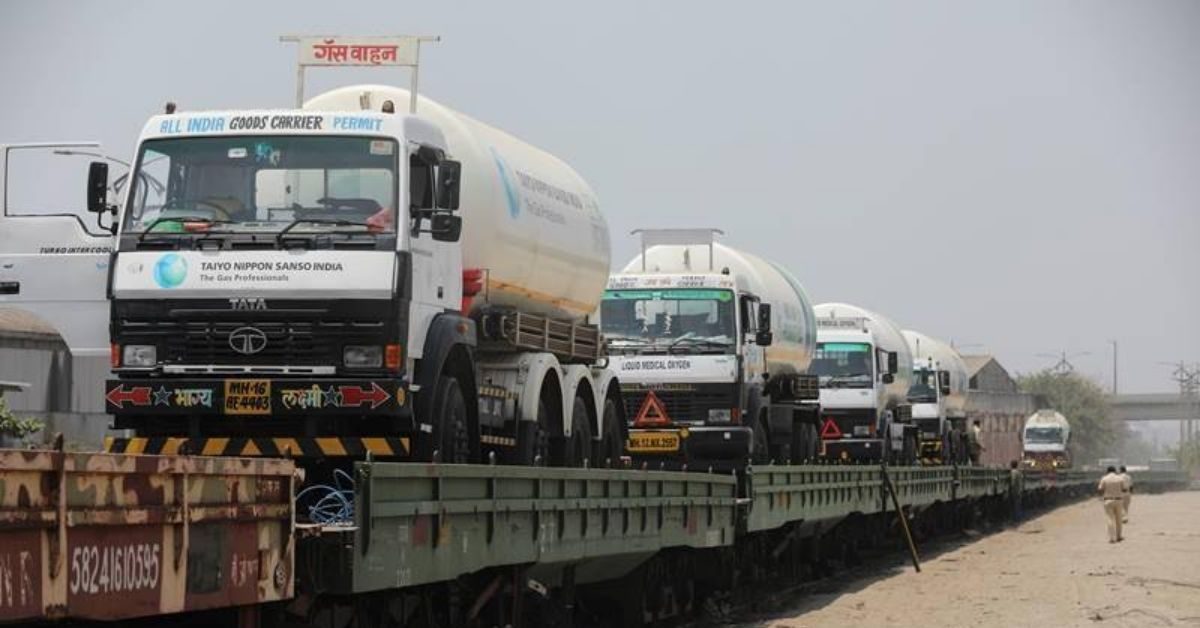According to the Railways, 121 Oxygen Expresses have completed their journey, moving 295 full tankers with 4,709 metric tonne of LMO. The Railways will reach the target of delivering 5,000 MT of LMO later on Monday.
Indian Railways is set to expand the operations of the Oxygen Express trains as more states, including Andhra Pradesh and Tamil Nadu, request the services to carry liquid medical oxygen (LMO). The national transporter is currently catering to the demand for Oxygen Expresses from eight states.
“Oxygen Expresses are being run as per demand. It is the Railways’ endeavour to deliver as much LMO as possible in the shortest time possible to the requesting states. We are doing real-time online monitoring through the freight portal for the expeditious delivery and have capacity to run more trains,” Suneet Sharma, chairman, Railway Board, told mediapersons on Monday during a virtual interaction.
According to the Railways, 121 Oxygen Expresses have completed their journey, moving 295 full tankers with 4,709 metric tonne of LMO. The Railways will reach the target of delivering 5,000 MT of LMO later on Monday, a spokesperson said.
Till date, 293 MT has been offloaded in Maharashtra, 1,334 MT in Uttar Pradesh, 306 MT to Madhya Pradesh, 598 MT in Haryana, 123 MT in Telangana, 40 MT in Rajasthan and 2,011 MT in Delhi. Of the 295 oxygen tankers delivered, 98 have gone to UP, 27 to MP, 100 to Delhi, 18 to Maharashtra, 40 to Haryana, nine to Telangana and three to Rajasthan.
More Oxygen Express trains are on the way with 50 tankers carrying 744 MT of LMO, of which Delhi will get 12 tankers, UP 15, Haryana 10, Karnataka six, Maharashtra four and MP three. The first Oxygen Express to Karnataka is also on the way to Bangalore with 120 MT of LMO.
Since the trials conducted on April 18 at Boisar in Maharashtra and the launch of the movement of LMO tankers by rail, it has been an uphill task for the Railways, which is facing manpower crunch with 1,000 positive cases being reported on a daily basis.
Sharma said the challenges include identifying suitable rail wagons, constructing ramps to load road tankers onto wagons, mapping railway routes, navigating constraints of low height fixed structures such as road overbridges, tunnels and overhead equipment, and placement of rail wagons near road tanker loading points.
Source: Financial Express








